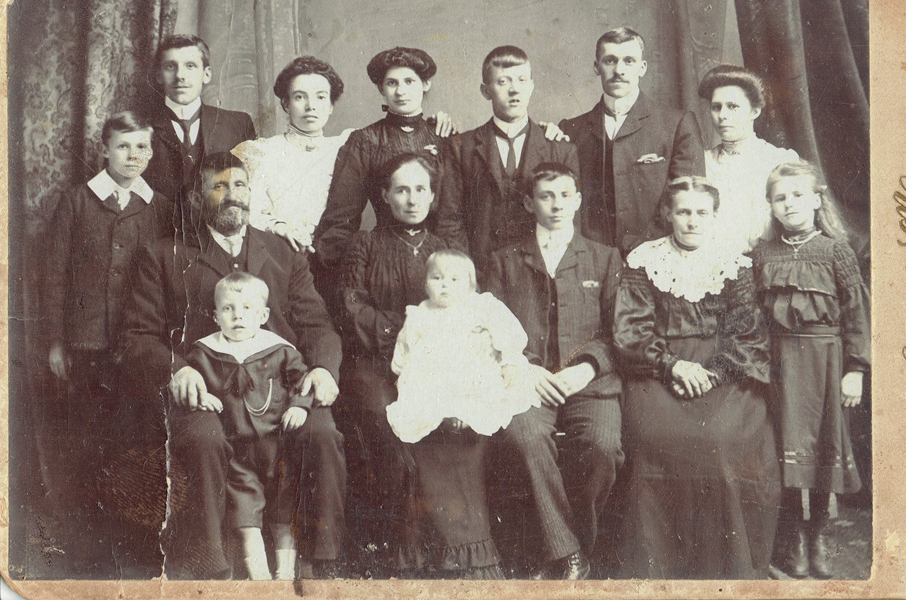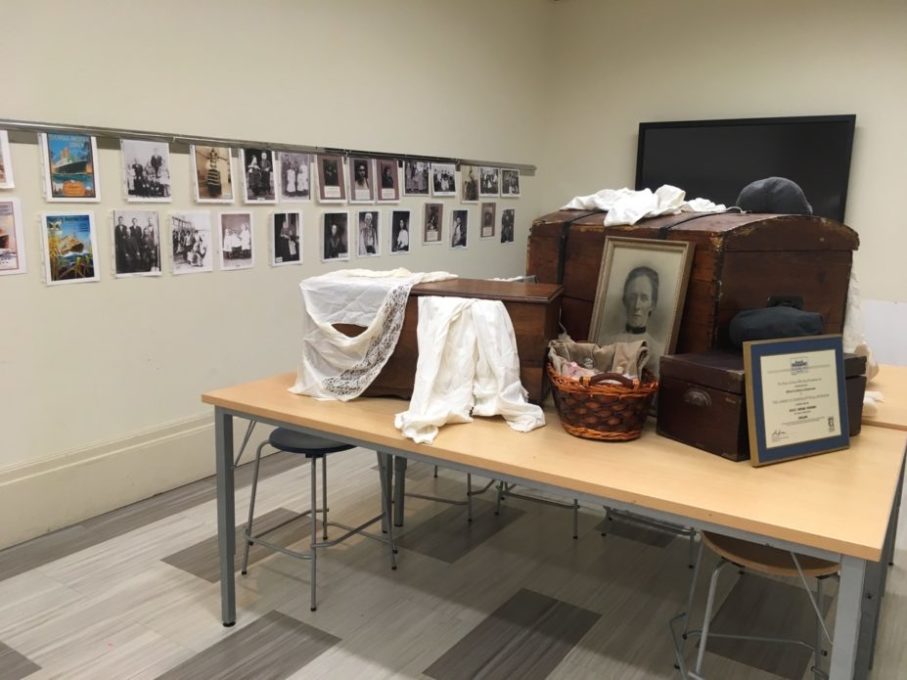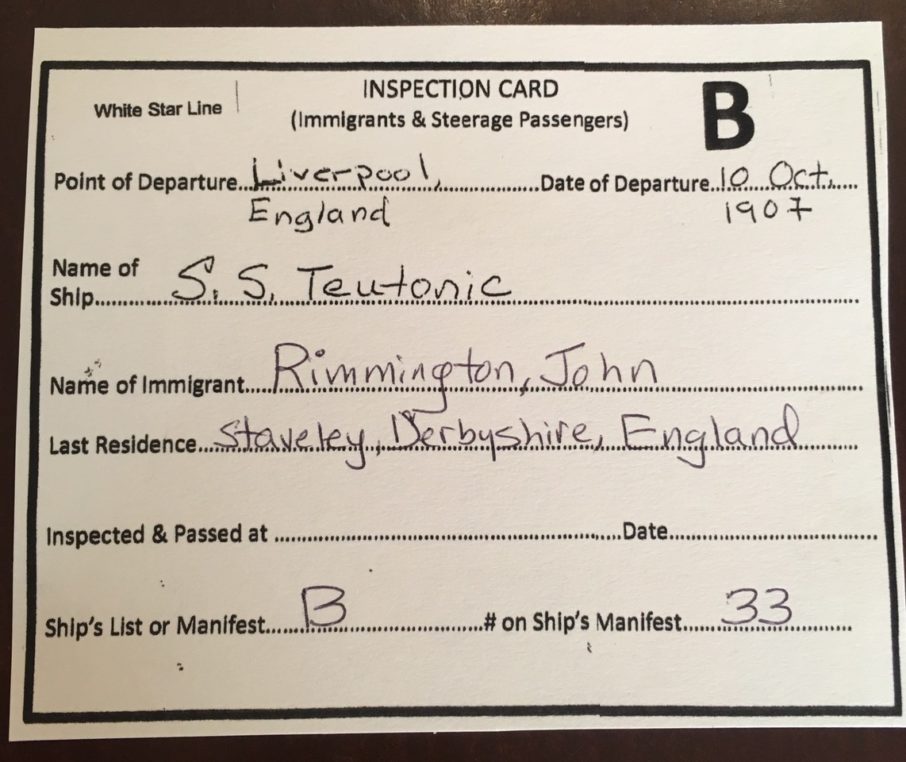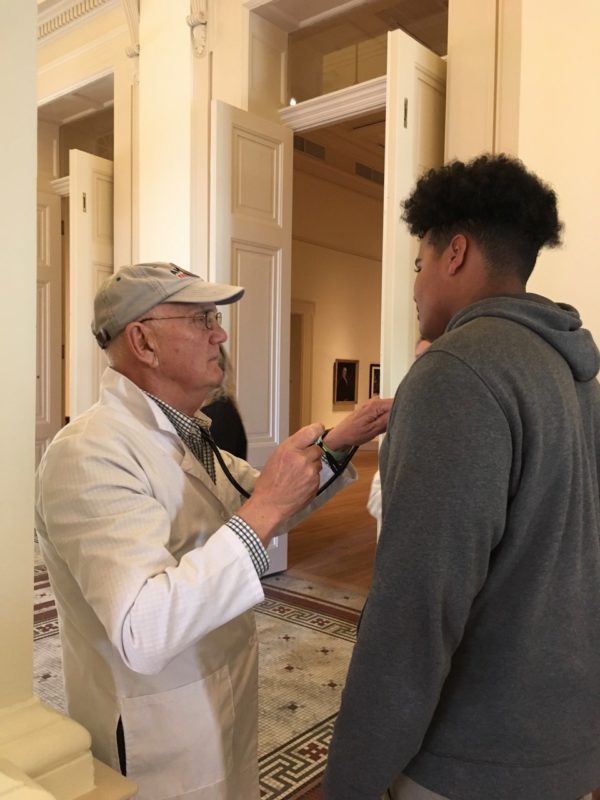The team of Gibbes Museum Educators often has the opportunity to create an “Engaged Learning Experience” for Engaging Creative Minds, a non-profit that pairs teachers and their wants/needs with art educators and institutions to provide a unique art-based experience for students. Teachers may request programs for a specific educational standard (or two!) in the subjects of reading and writing, science, math, or social studies for second- to eighth-grade levels. This February, we received a request for an eighth-grade social studies standard that dealt with the Progressive Era, including industrialization and immigration.
When this request came from the ECM coach for Berkeley County, I was immediately excited and couldn’t wait for the planning meeting, which included the two teachers, the coach, Gibbes Associate Curator of Education Becca Hiester, and me. Within an hour, we had a plan. The first day (in school), we would study child labor with photos taken from the National Child Labor Committee’s Collection of Lewis Hine photos. For the second day, at Becca’s suggestion, the Gibbes Museum of Art would become Ellis Island, where 130 Marrington Middle Schoolers would be processed through immigration.
I love challenges like this! Driving home that day from Marrington Middle, the plan was floating around in my head, and I knew we could do it. Like a lot of you, I have grandparents who went through Ellis Island. I knew their story—all I needed to do was to create a story for each of those 130 students.

I have a cousin who long ago pursued our family genealogy and who has passed the information on to me. One of the items was the ship manifest for my grandfather, John Rimmington, who arrived at Ellis Island on October 19, 1905, on the S.S. Teutonic from Liverpool, England. I knew the steps he had taken to get to that arrival—I even have the family portrait taken the night before he started the journey. My grandfather traveled from his small mining village in the Midlands of England to a larger town by horse and buggy, transferring to a train to the port town of Liverpool, and then finally to the S.S. Teutonic, where he descended into steerage. And, because I had already worked with a fifth-grade group detailing the steps immigrants had to go through at Ellis Island upon arrival, I knew we could make this come alive for our Marrington Middle eighth-graders.

Each “immigrant” needed to be assigned a port of departure, so I chose 5 countries from which significant numbers of immigrants came to the US in the early 20th century: England, Sweden, Italy, Germany, and Lithuania. They would all need to arrive on the same day, October 19, 1907 (the largest amount of arrivals occurred in 1907). It was amazingly easy to find existing manifest lists for the English, Swedish, Italians, Germans, and Polish and Russian Jews who actually came through Ellis Island, on real ships on real shipping lines. I adapted the lists’ dates and made the names easier to read, so the students could assume the name and identity of the immigrant they would become.
From the manifest lists, we created “inspection cards” for each student. Many, many thanks to our intern, Brittany Marino, who filled in the blanks on the 130 inspection cards. I have no idea how long this took her, but it was a HUGE job.

We obviously couldn’t re-create the many steps these weary people took once they arrived on Ellis Island. So we limited ourselves to the two big ones: the dreaded “Medical Inspection” and the equally terrifying “Legal Inspection,” where immigrants were asked a variety of questions they had already answered upon their departure from their home country. We needed two teams, one for each inspection. Happily, we had some wonderful volunteers who added the necessary skills (one was a real doctor in a real lab coat, but the stethescopes were fake!) and stern faces to make this all seem real.

On February 15, all 130 immigrants “landed” at the Gibbes Museum of Art at 10 am. The morning included a 45-minute museum tour, and we used the Gibbes collection to share with the immigrants details about the country they were entering, as well as a 45-minute PowerPoint presentation showing them all the steps it took for an immigrant to leave his or her home in the old world and arrive in the new.
The students took a short break for lunch, then we began to re-enact “Heartbreak & Hope at the Gibbes.” It ran like clockwork, thanks to the Museum Educators, the staff, and our wonderful volunteers.
The Museum Educators acted as Ellis Island guards. Standing in a straight and determined line on the Museum steps and down the hallway, they BARKED the instructions for the hour-long event in 5 different languages: Spanish, French, German, Dutch, and English.
-You will receive an inspection card. Do NOT lose it!
-Practice the pronunciation of it, and be prepared to say it when asked.
-Be able to provide the name of the port you came from, and the name of the ship you came on.
-Your first stop is Medical Inspection. People will be watching you as you go up the stairs. If you sneeze, cough, limp, or seem dazed, you may be pulled out for quarantine. If you pass inspection, your inspection card will be stamped in the appropriate space.
-From there you will proceed, in an orderly fashion, to Legal Inspection. The inspectors will ask you the same questions you were asked in your home port. Be prepared to answer them honestly, or you may be sent back to your home country.
The entire inspection process was completed in 52 minutes, eight minutes shy of our one-hour time limit. The students later commented that at first, they didn’t understand the multiple languages being shouted at them, but then realized that for immigrants coming in from many countries, the English they encountered at Ellis Island was as foreign to them as the languages our Museum Educators were yelling at them. They GOT IT!

Will we do this again? OF COURSE! It was so rewarding to hear comments from the teachers, the chaperones, and the students throughout the process. The Inspection team reported that some of the students responded to the Legal Inspectors with accented English to the somewhat invasive questions. “No, I am not an anarchist.” “No, I am not a polygamist.” “No, I have not been in the poorhouse or the jail.” And some of them could even respond to questions about the US Constitution! Could you do that?
And the best part of all was when the Legal Inspectors said “Welcome to the United States of America,” and the newly arrived citizens said, with a huge smile, “I did it! I got in!”
— Elise Detterbeck, Museum Educator and Guest blogger
Published March 23, 2017
Many thanks to our volunteer teams:
Museum Educators: Marielena Martinez, Lucie Medbery, Joan Zaleski, Shawna Courter, Ana Maria McCaa
Medical Inspection: Brenda & David Waldron, Chuck Medbery, Pat Burgess, Catherine Jenrette, Wendi Ammons, Harriet Smartt
Legal Inspection: Jim Connor, Grant Maddox, Les Detterbeck, Lasley Steever
And special thanks to Becca Hiester, Megan Zembower, & Brittany Marino
Top Image: Here one sees a part of the manifest for the S.S. Teutonic’s voyage Oct. 11-19, 1905, from Liverpool to N.Y. We used manifest lists like this one to create “inspection cards” for the students to make the simulation experience as realistic as possible.

